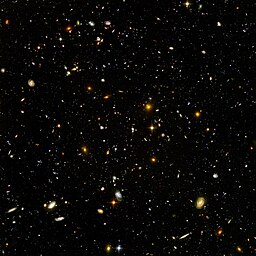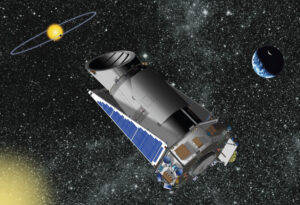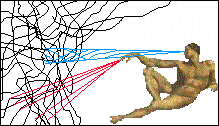
The Mystery of Early Dark Energy: A Hopeful Path to Resolving Cosmological Puzzles
The recent study published in the Massachusetts Institute of Technology (MIT) News sheds light on a fascinating concept: early dark energy. This hypothetical form of energy, believed to have existed in the universe’s first billion years, presents a potential solution to two of cosmology’s most perplexing enigmas – the Hubble tension and the abundance of bright galaxies in the early universe.
Our understanding of the cosmos is constantly evolving, yet significant gaps remain in our knowledge. Dark energy, a mysterious force counteracting gravity and causing the universe’s expansion to accelerate, is one such enigma. We don’t fully grasp its nature or origin, and its properties are inferred solely through its gravitational effects.
The article delves into the concept of early dark energy, proposing its existence during the universe’s infancy. This early dark energy, unlike the dark energy dominating the universe today, is hypothesized to have behaved differently. It could have acted as a repulsive force, driving a more rapid expansion of the universe compared to the expansion predicted by the standard cosmological model.
The standard cosmological model, a widely accepted framework for understanding the universe’s evolution, relies on two key parameters: the Hubble constant, which dictates the expansion rate, and the density of matter and energy throughout cosmic history. However, recent measurements of the Hubble constant using techniques like observing Cepheid variable stars in distant galaxies have yielded values that disagree with those predicted by the standard model based on the cosmic microwave background radiation (CMB). This discrepancy is known as the Hubble tension.
Early dark energy, with its potential for accelerated expansion in the universe’s early stages, could reconcile this discrepancy. If the universe expanded faster in its youth due to early dark energy, it would be slightly larger today than predicted by the standard model. This larger size would be reflected in a higher Hubble constant, potentially aligning the observed and predicted values.
The article further explores how early dark energy might explain the observed abundance of bright galaxies in the early universe. The standard model struggles to account for the number of luminous galaxies astronomers have observed at high redshifts (indicating a very distant and young universe). Early dark energy, by enhancing the growth of density fluctuations in the early universe, could have facilitated the formation of more stars and galaxies than previously anticipated.
The implications of early dark energy are profound. It presents a new theoretical framework that could potentially resolve two longstanding cosmological puzzles. However, it’s crucial to acknowledge the limitations of this hypothesis. Early dark energy is purely theoretical, and there is no direct observational evidence to support its existence. Further research and exploration are necessary to validate or disprove this concept.
One potential avenue for exploration is the analysis of high-precision cosmological data sets. By meticulously studying the CMB and large-scale structure formation in the universe, cosmologists might uncover signatures or patterns that could hint at the presence of early dark energy. Additionally, advancements in theoretical physics might lead to the development of more sophisticated models that incorporate early dark energy and its properties.
If the existence of early dark energy is confirmed, it would necessitate a paradigm shift in our understanding of the universe’s evolution. It would imply that dark energy is not a monolithic entity but rather a dynamic force that has evolved over cosmic time. This realization would open up exciting new avenues for cosmological research, prompting us to re-evaluate our understanding of dark energy’s role in shaping the universe’s fate.
The quest to unravel the mysteries of dark energy is a testament to the human spirit’s inherent curiosity and our relentless pursuit of knowledge. The concept of early dark energy, while hypothetical, serves as a beacon of hope, offering a potential path towards resolving longstanding cosmological puzzles. As we delve deeper into the cosmos’s secrets, the possibility of early dark energy becoming a cornerstone of our cosmological understanding becomes increasingly intriguing.
Beyond the Summary: A Broader Look at Cosmological Puzzles
The article on early dark energy serves as a springboard for exploring some of the broader challenges and questions that cosmologists grapple with today. The Hubble tension and the abundance of bright galaxies are just two examples of the many puzzles that remain unsolved.
One such challenge is the nature of dark matter, another mysterious component of the universe believed to constitute roughly 85% of its matter content. Dark matter interacts with gravity but not with light, making it invisible to our current telescopes and instruments. Understanding the properties and interactions of dark matter is crucial for piecing together a complete picture of the universe’s evolution.
Another area of active research is cosmic inflation, a hypothetical period of rapid exponential expansion that the universe is thought to have undergone





